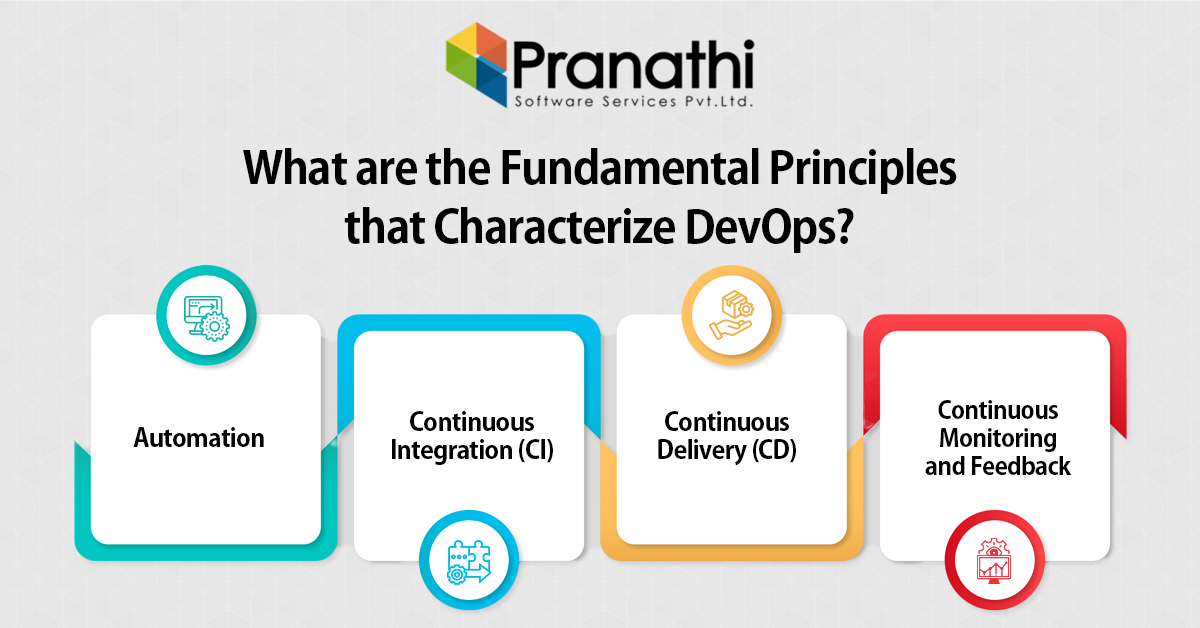Revolution in Development by DevOps and Cloud Service Models

5 min read
Companies always look for ways to streamline their software development procedures without sacrificing quality. DevOps and Cloud Service Models are two revolutionary ideas that have revolutionized software development and deployment. This blog post examines how cloud service models and DevOps revolutionize software development. Here, we review the advantages of these approaches and important guidelines and procedures. When you finish reading this blog post, you will thoroughly understand how DevOps and cloud service models are changing the development landscape.
Modern Software Development Practices and Cloud Infrastructure
-
DevOps: Bridging the Gap
More than just a catchphrase, DevOps is a technique that unites teams working on development and operations. It encourages teamwork, automation, CI/CD, or continuous integration/delivery. This strategy simplifies the software development process, promotes communication, and dismantles silos. DevOps helps companies deliver high-quality software faster, have a shorter time-to-market, and increase overall efficiency by promoting a culture shift and emphasizing shared responsibility. By implementing DevOps concepts, teams, guided by an AI development company, can react quickly to shifting needs and market demands, improving a company’s competitiveness and resilience technology environment.
-
Cloud Service Models: An Overview
The foundation of contemporary development is now made up of the Cloud Service Models, which include infrastructure as a Service (IaaS), Platform as a Service (PaaS), and Software as a Service (SaaS). These methods lower infrastructure overhead and speed up development cycles by providing artificial intelligence developers with scalable, on-demand access to databases, services, and computer resources. IaaS gives businesses a scalable infrastructure base that they may use to scale and manage virtualized computer resources. PaaS provides a platform where developers may concentrate on creating and implementing apps by abstracting away the complexity of infrastructure. SaaS eliminates the requirement for local installations by providing software programs that are ready to use and available via the Internet. Understanding these service models becomes essential as more and more firms go to the cloud to maximize resource usage, improve teamwork, and achieve cost-effectiveness in the rapidly changing cloud computing market.
How does DevOps Impact the Development Process?
“DevOps,” a combination of “development” and “operations,” is a revolutionary model that is changing the software development landscape, not simply an acronym. This method significantly impacts the development process, radically modifying conventional procedures and promoting an innovative, efficient, and collaborative culture.
The integration facilitates smooth teamwork by reducing organizational barriers impeding effective communication. DevOps assurances that software development becomes a more unified, collaborative, and iterative process, with the integration of AI software development services accomplishing this. Another essential component of DevOps is automation, which minimizes the possibility of human error and streamlines repetitive operations. Continuous integration and delivery (CI/CD) pipelines allow for the automation of software creation, testing, and deployment, resulting in more reliable and speedy software release cycles. This automation improves the overall quality of the software while also quickening the development process.
Additionally, the DevOps strategy stresses a culture shift within organizations by promoting a shared responsibility mindset. The development and operations teams collaborate to overcome obstacles, exchange ideas, and jointly contribute to the project’s success. A more comprehensive grasp of the full development lifecycle is the outcome of this shared ownership, improving communication.
Beyond streamlining processes, DevOps has a direct positive impact on innovation. Teams can react quickly to shifting requirements and market demands due to the iterative and rapid nature of DevOps processes. In a constantly changing and competitive technology environment, this agility is essential for businesses, with the integration of artificial intelligence in business, to remain ahead of the curve by promptly adjusting to new trends and client demands.
What are the Fundamental Principles that Characterize DevOps?

As a technique, DevOps is guided by several fundamental ideas that are intended to promote cooperation, effectiveness, and ongoing enhancement between development and operations teams. The following are the main roles of DevOps:
-
Automation
A key tenet of DevOps is automation, which strives to do away with human work, lower mistake rates, and boost overall productivity. Organizations should focus on providing value to end users instead of wasting time on repetitive tasks by automating regular procedures like testing, deployment, and monitoring.
-
Continuous Integration (CI)
Regular code updates merge into a shared repository as part of continuous integration. Automated build and test procedures provide a smooth integration of code changes with few issues. CI speeds up feedback loops and decreases the time needed for debugging by assisting teams in identifying problems early on.
-
Continuous Delivery (CD)
CI is expanded by continuous delivery, which automates the release procedure. Organizations use CD to make software deployments simple, dependable, and repeatable. By automating deployments across several environments, including testing, staging, and production, enterprises can assurance the regular and low-impact distribution of software upgrades.
-
Continuous Monitoring and Feedback
DevOps relies heavily on continuous monitoring since it offers real-time insights into the performance and usability of applications. Organizations can monitor important indicators to promote continuous development, proactively identify problems, and solicit user feedback.
Read More: Software Development’s Evolution: Agile to DevOps and Beyond
How do Cloud Service Models Operate in Practical Scenarios?
To fully utilize cloud services, one must grasp their various models:
-
Infrastructure as a Service (IaaS)
Computer resources are virtualized and made available via the Internet by infrastructure as a Service (IaaS). Organizations can instantly provision virtual machines (VMs), storage, and networking resources without purchasing actual hardware.
-
Platform as a Service (PaaS)
Platform as a Service (PaaS) further abstracts the underlying infrastructure layer by offering a comprehensive application development and deployment platform. Through PaaS models like Heroku or Google App Engine, organizations can concentrate entirely on application development without worrying about infrastructure administration. PaaS provides higher-level abstractions, including middleware, databases, and application frameworks.
-
Software as a Service (SaaS)
On a subscription basis, software as a Service (SaaS) provides whole programs over the Internet. SaaS products, such as Microsoft Office 365 and Salesforce, can be used by organizations without installation or maintenance. Businesses may easily implement market-leading software using SaaS models without spending money on infrastructure or development.
Benefits of DevOps and Cloud Service Models
DevOps methods and Cloud Service Models work together to produce several advantages that improve productivity, scalability, and creativity in contemporary development processes.
-
Increased Collaboration and Communication
Development, operations, and other stakeholders in the software development process are encouraged to work together and communicate through DevOps. Organizations can increase decision-making speed, decrease rework, and boost overall productivity by dismantling departmental silos and encouraging cross-functional interaction.
-
Continuous Integration and Deployment
DevOps enables continuous integration (CI) and continuous deployment (CD), allowing organizations to deliver software updates rapidly and frequently. Code updates are effectively tested and delivered, reducing the possibility of errors or problems through automated testing, version control, and deployment pipelines.
-
Infrastructure as Code (IaC)
Infrastructure as Code (IaC), which defines infrastructure resources through code, is a concept that cloud service models highlight. With this method, infrastructure configuration, provisioning, and scalability may be programmatically managed by businesses. IaC allows enterprises to scale their apps easily, eliminates manual procedures, and lowers human error.
-
Cost Efficiency and Scalability
Cloud service models offer cost efficiency by providing on-demand infrastructure resources. Businesses only pay for the resources they utilize while scaling their apps by demand. As a result, companies can minimize their infrastructure expenses and do not need to make upfront hardware investments.
-
Enhanced Stability and Reliability
Software programs are more stable and reliable when they use DevOps techniques like proactive issue management, continuous monitoring, and automated testing. Early issue detection helps firms reduce risks and ensures a positive customer experience.
Conclusion
DevOps and cloud service models have completely transformed the software development landscape, prioritizing automation, scalability, reliability, and collaboration. By adopting these approaches and utilizing cloud infrastructure resources, enterprises may ensure high-quality products while expediting their development processes. There are going to be some fascinating changes, which makes being a software engineer and business exciting.
Visit our blog to get more interesting information about AI services!
Published: December 12th, 2023





